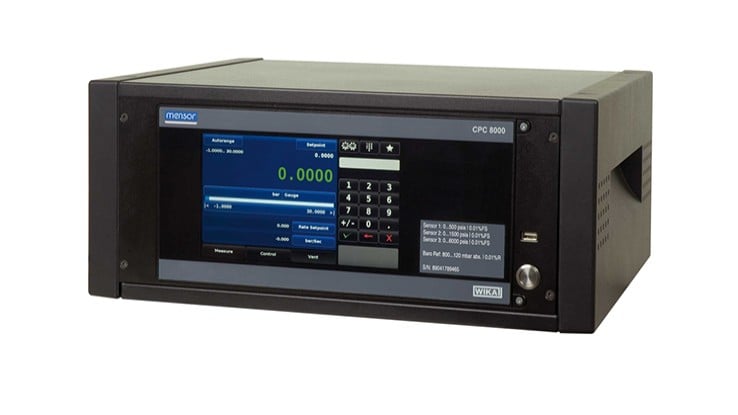Pressure calibrators
Pressure calibrators come in a wide variety. A pressure calibrator is a high-precision pressure measuring device capable of verifying (or calibrating) the pressure reading of another pressure measuring instrument. These instruments are also called pressure standards. The pressure calibrator must be more accurate than the instrument being calibrated. Traditionally, the calibration ratio is 4:1. This means that the pressure calibrator is 4 times more accurate than the device it is calibrating.
A pressure calibrator can also have additional features simplifying the calibration. A pressure calibrator, for instance, that can measure the output of a test item. It might also have an internal pump that can generate pressures used in the calibration, or it could have a precision regulator that can control a supply pressure and maintain a precise pressure output. Pressure calibrator is a widely used term that can mean a lot of different things to a lot of different people.
Form, fit and function of the pressure calibrator
Pressure calibrators can come in different configurations to fulfil specific requirements. For pressure calibration on-site, which requires portability and functions that may include voltage, current or digital signal monitoring/recording from the instrument being calibrated, hand-held multi-function calibrators are the tool of choice. In a laboratory environment where a higher accuracy may be required and precise control of pressure is needed, a pressure calibrator / pressure controller would be a better choice.
Dead-weight testers come in a wide range of accuracies and pressure ranges and have been utilised for years in the field and in laboratories. Dead-weight testers generate pressure using the definition of pressure (pressure = force/area). The measurement uncertainty or accuracy associated with dead-weight testers is specified as a percentage of the measured value as opposed to a percentage of full scale. They require no power to operate. For these and other reasons they are sometimes seen as a superior choice, but they are also bulky and require a skilled operator. High-end dead-weight testers are still considered the gold standard for pressure calibration at its highest level in laboratories around the world, but more and more hand-helds and pressure controllers are replacing dead-weight testers in the field and in process applications.
WIKA, DH-Budenberg and Mensor pressure calibrators
WIKA pressure calibrators in general may be described as portable process calibrators, or multi-function pressure calibrators because they have additional features beyond just pressure calibration. An example of these is the CPH7000 portable pressure calibrator.
DH-Budenberg has a variety of dead-weight testersthat can be used as pressure calibrators. Mensor pressure calibrators are available as sensors, indicators and controllers. Each of these could be used as a pressure standard, or pressure calibrator.
A sensor by Mensor will require a regulated pressure source and a way to read the output signal from the sensor. An indicator will require a regulated pressure source. A Mensor pressure-controlling calibrator can control pressure to a precise set point and measure the pressure with high-accuracy internal sensors. Mensor pressure-controlling calibrators can have multiple channels and multiple sensors to expand their range and accuracy. With these pressure calibrators, pressure calibration is possible in ranges from -15 … +70,000 psi.





